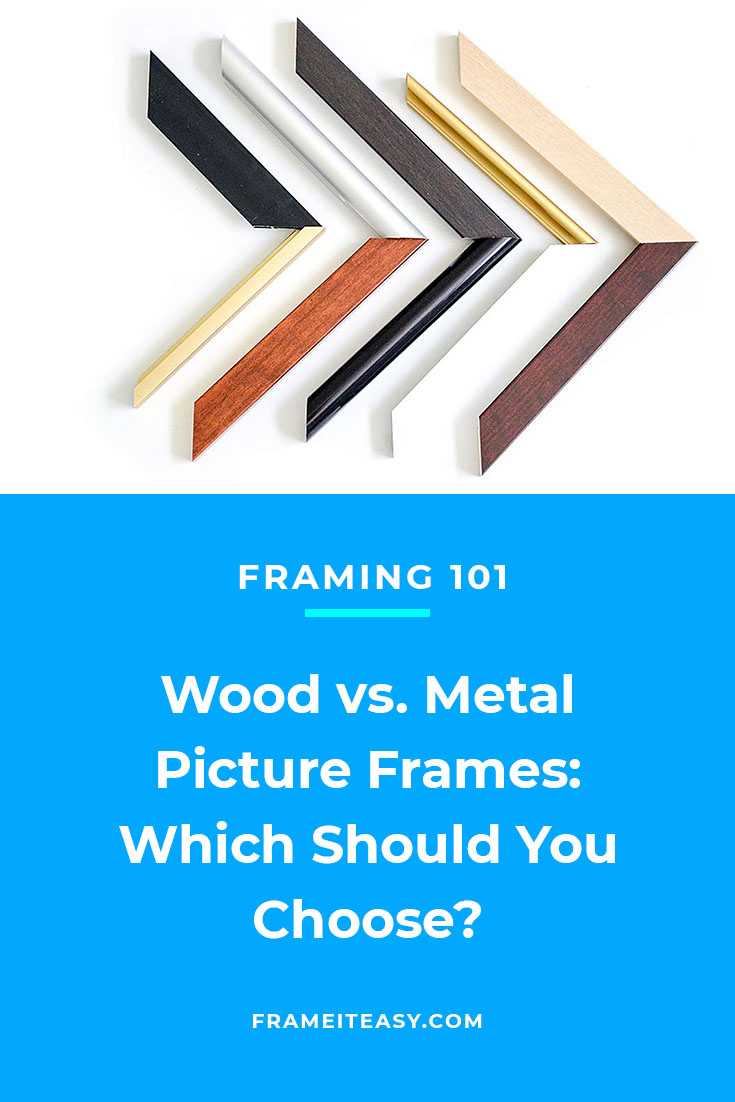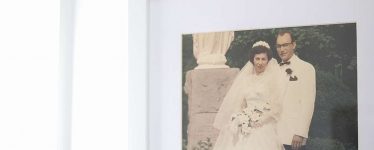🤔 Metal picture frames… or… wood picture frames? So many choices! What’s the difference?
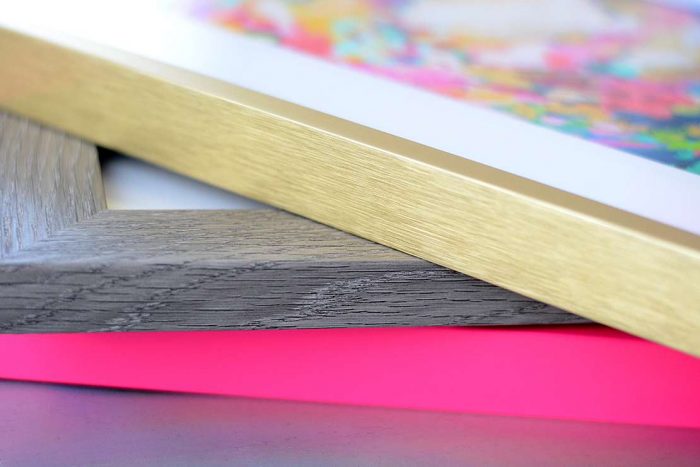
When looking to frame a photo or piece of art, the frame itself (i.e. the molding or profile) is equal parts function and aesthetic. It has to look good and complement your art, but it also has to hold your artwork in place effectively.
A big part of both criteria is what your frame is made of. While other materials can be used, today we’ll focus mainly on picture frames made out of wood and metal.
Wood Picture Frames
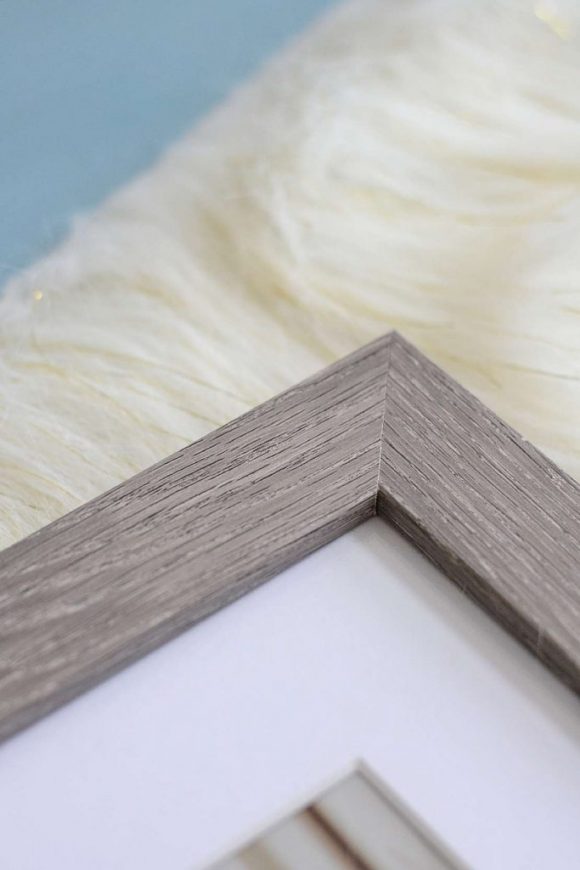
There are three different types of wood that are primarily used for framing, and the distinction is important.
- 🪵 Solid/Natural wood
- 🪵 Medium-density fiberboard (MDF)
- 🪵 Finger-jointed poplar
The first, solid/natural wood, is as it sounds — ordinary lumber that wasn’t modified upon being cut down.
The second two, MDF and finger-jointed poplar are engineered. They are still wood, but they aren’t of a log straight from the lumber pile — they have been taken from bits and pieces of wood and rejoined to form something new. While this “re-engineering” might sound less desirable, it offers lots of advantages.
Solid/Natural Wood
While arguably one of the more aesthetically pleasing materials, natural wood is usually the most expensive option. It’s traditionally stained and has a more natural-looking grain that will vary from frame to frame, adding a certain level of uniqueness.
Some people prefer this despite the higher cost, limited availability, and increased fragility.
Natural wood can contract and warp in high heat/humidity and is also more susceptible to pest infestation than its engineered counterparts, making it a more “high maintenance” material.
Since the natural grain patterns are not covered, you can expect variations.
(There is also an environmental argument to be made against solid/natural wood: it’s difficult to recycle wood and keep it original to its straight-from-the-lumberyard form. Because of this, to sustain a business where solid wood frames are sold, it would have to be at the expense of excessive amounts of trees).
Medium Density Fiberboard (MDF)
MDF is a recycled wood material, made of what is essentially sawdust, compressed with some type of binder, and wrapped for a uniform finish.
While many people perceive MDF to be a cheaper, less desirable knockoff of the real thing, it has some very compelling benefits, as it is more stable & consistent and requires less maintenance (which is helpful for most casual framers.)
Common wood elements in your home or office (cabinets, flooring, furniture, etc.) are likely made from MDF due to their durability and consistency. It’s also typically the most cost-effective material, usually available in higher quantities for easy availability.
MDF, in addition, is less likely to bow and warp in high-humidity environments, although temperature changes can affect nearly any material.
Finger-Jointed Poplar
Finger-jointed poplar is a type of recycled wood characterized by how it’s bonded together.
“Finger-jointing” is a process that bonds different types of wood by cutting complementary sets of rectangular joints in two pieces of wood, and then linking them together.
This process is done to scrap lumber, attempting to give it a purpose beyond sitting on the floor. It has been used for making many products (boxes, doors) across many industries (automotive, home improvement).
Finger-jointed wood implies that the material has been recycled, which has more sustainable environmental implications, and poplar, in particular, is a type of fast-growing tree found in northern temperate regions. This means it’s rather plentiful, which makes for an inexpensive final product.
Finger-jointed poplar is a good middle ground between solid wood and MDF. While still a recycled wood material similar to MDF, rather than being made from sawdust it is created with the joined solid wood pieces that are then covered with a high-quality laminate that allows for consistent coloring.
It’s closer to solid wood than MDF but also is a more ecological choice since it is made from recycled material.
Here at Frame It Easy we began with a quality MDF material for our wood frames, but have since converted over to finger-jointed poplar (both have a decorative wood pattern wrap).
This eco-friendly approach allows us to ship sturdy, high-quality, consistently colored natural wood frames (without requiring any additional trees to be cut down!)
Metal Picture Frames
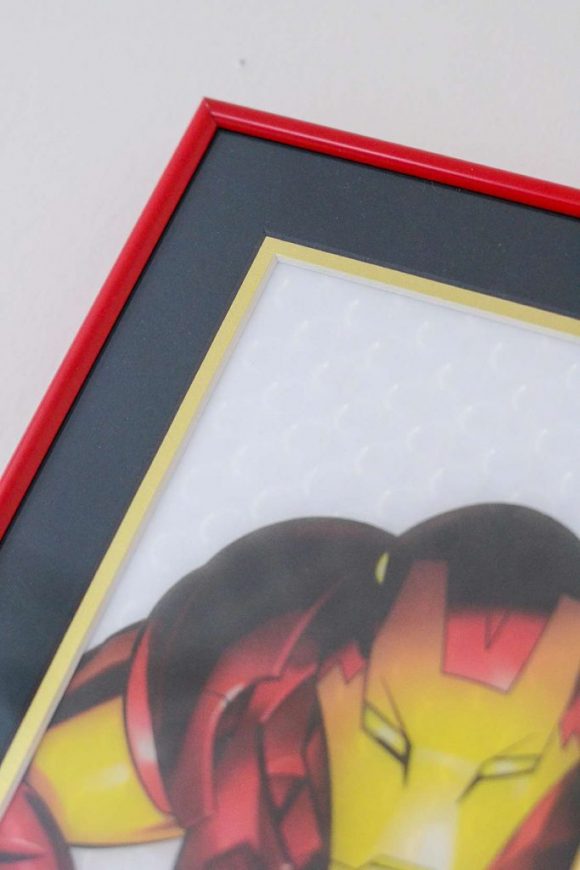
Metal is another common building material used for picture frames, and there are several different types — some more expensive than others— that vary in aesthetic.
Silver
In rare cases, metal frames can be made of silver or bronze. These are costly choices, however, and aren’t advisable for the casual framer.
A silver frame — even one as small as 5″ X 7″— can have a starting cost of over one hundred dollars.
This is likely, among other reasons, due to its scarcity; silver constitutes .05 parts per million in the Earth’s crust.
Bronze
Bronze is an alloy made of copper and another metal. More often than not, this other metal is tin.
An issue with bronze is its necessity to oxidize, creating a green outer layer. Think of the Statue of Liberty; which used to be bronze-colored, but years of oxidization — or potential exposure to certain chlorides — lead to “bronze disease,” which is the layman’s term for the metal turning green.
Because of this, Bronze is also not great for casual framers and would require just as much maintenance as a solid wood frame would.
Aluminum
In most cases, metal picture frames are made of aluminum. This material has many uses, ranging from beer kegs to airplane parts.
Since aluminum is the most abundant material in the Earth’s crust, it’s more affordable. It is also lightweight, which means that even a large picture frame measuring 42” X 62” would likely only weigh two or three pounds when made from aluminum.
In contrast to Bronze, aluminum is resistant to corrosion, which means that minimal maintenance would be required.
The occasional dusting would be needed, of course, but nothing would happen to greatly change its color, especially if it’s anodized or powder coated— two processes that are meant to make aluminum more decorative.
Most aluminum frames are anodized, which is a process that makes the surface of aluminum more attractive and durable, making for a better display with far less maintenance. This process makes satellites more resistant to the vacuum of space, and it was used in the Sears Tower in Chicago. It also has no noticeable environmental consequences.
If the aluminum frame hasn’t been anodized, however, it was likely powder-coated, which is a finish that is tougher than conventional paint, meaning it will last longer. It also extends the life of the metal itself.
Here at Frame It Easy, we offer a variety of metal frames that vary in color, thickness, and style. All are made out of aluminum through a process called “extrusion.”
First, an aluminum billet (basically an aluminum log) is heated to almost a thousand degrees and forced (using 750 tons of pressure!) through a die. The newly extruded aluminum is then placed on a “stretcher” where all imperfections are removed.
Finally, the aluminum is either anodized or powder coated, converting the surface of the material into a decorative, durable, corrosion-resistant finish, meaning these frame rails are extremely rigid and high-quality.
A Quick Note On Plastic Picture Frames
Plastics such as polystyrene are sometimes used in frames that you can buy at big-name retailers.
The materials in these, however, are generally less aesthetically pleasing and functional in favor of a cheaper price.
They would be good for a frame that you would only need temporarily, or for something of a standard size.
Final Thoughts
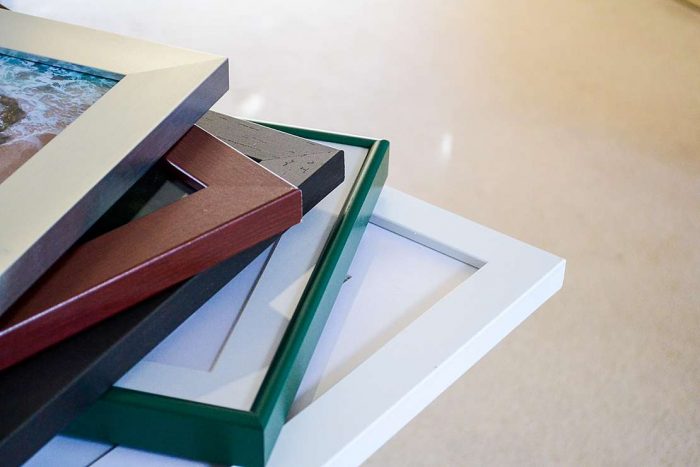
There are many differences between wood and metal frames, and they require different approaches to assemble and maintain.
For casual framers, the best option would always be the most cost-effective and require the least maintenance. It’s not worth buying an expensive solid wood or bronze frame if you don’t intend to maintain it, then letting it rust or succumb to infestation.
Beyond the functional nuances, however, it depends on the customer’s own aesthetic taste. If you’d like to check out the frame style options we offer, head to our handy custom frame designer!
